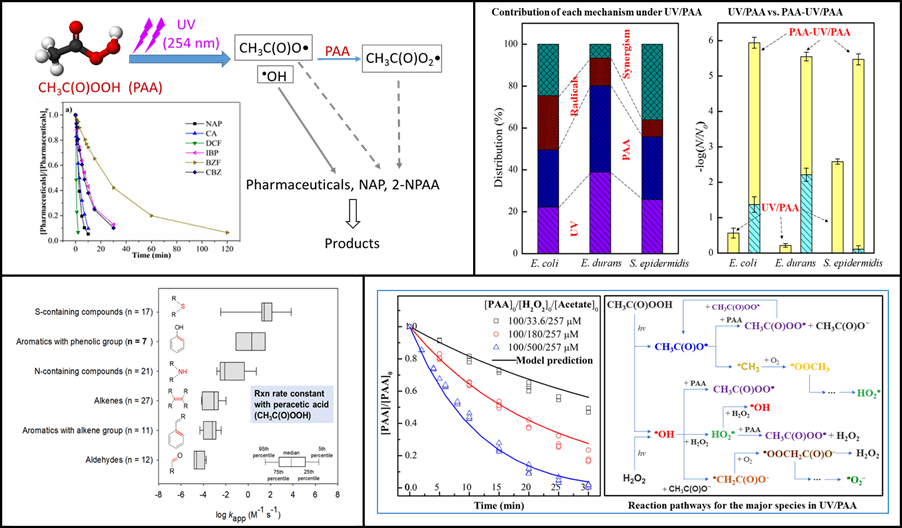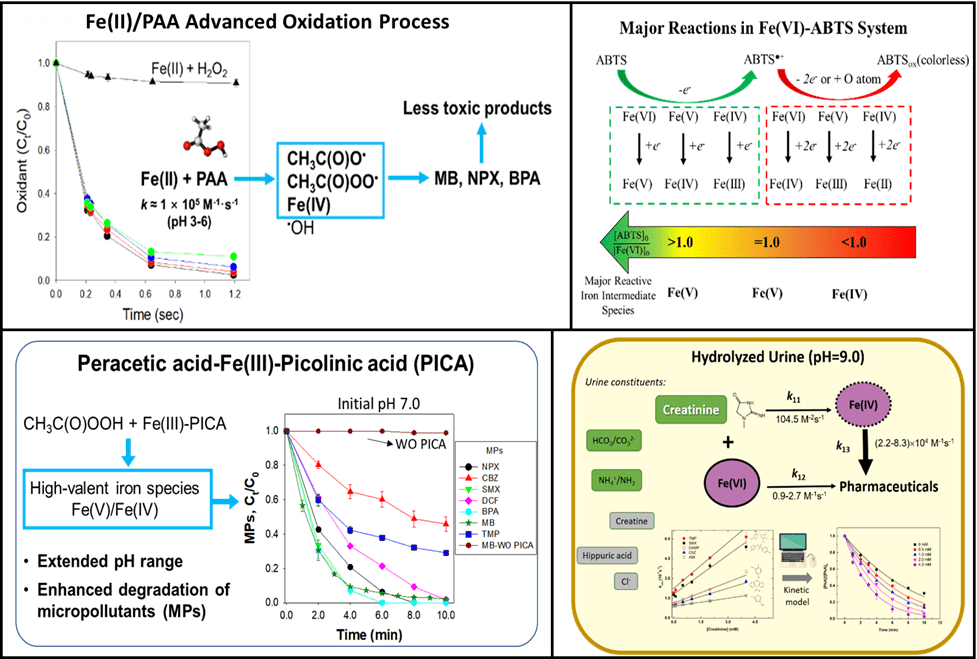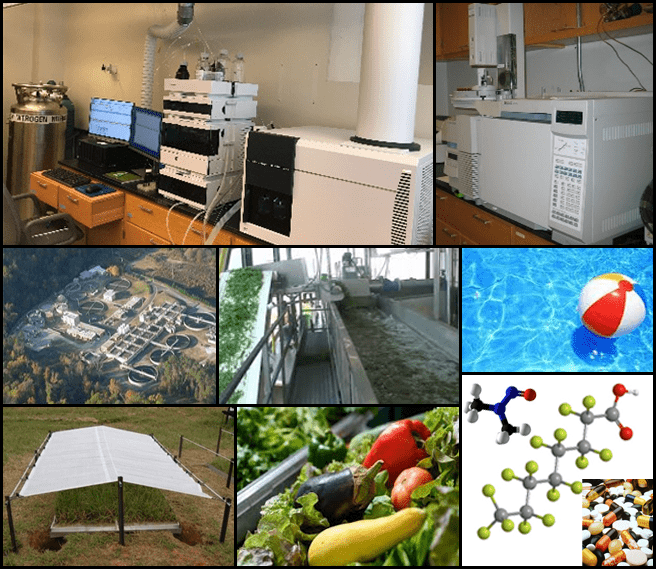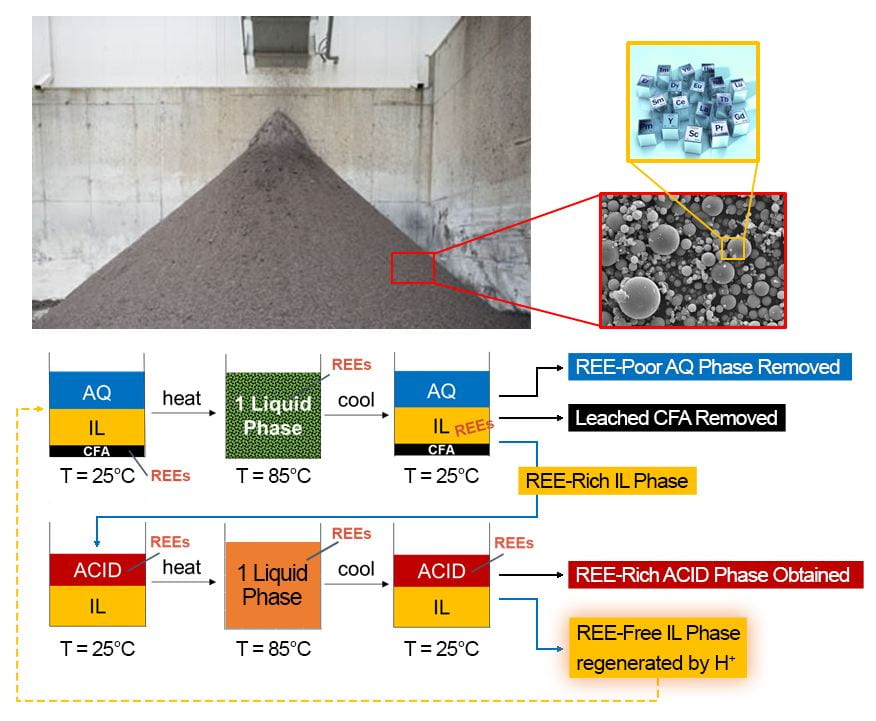My research interests are in the broad area of Environmental Chemistry, and current work of our research group places an emphasis on water quality engineering and resource recovery. Specifically, our group has been active in several research areas including emerging contaminants (their occurrence, fate and control), novel physical-chemical processes for water/wastewater treatment, solid waste remediation and resource recovery, advanced analytical techniques, and fundamental reaction kinetics and mechanisms of pollutants. We have investigated a wide range of contaminants, including per- and polyfluoroalkyl substances (PFAS), pharmaceuticals and personal care products (PPCPs), emerging disinfection by-products (DBPs), and toxic heavy metals, for their occurrence, fate, and remediation in natural aquatic systems and engineered treatment processes. The goal of my research effort is to advance our fundamental understanding of reaction kinetics and mechanisms which are imperative to improve characterization and prediction of the environmental fate of contaminants, and serve as the foundation to enhance development of novel treatment technologies to mitigate or prevent environmental pollution.
CURRENT RESEARCH AREAS:
Novel Oxidation/Reduction Technologies
A) UV-Activated Oxidation Processes:

Example publications:
- Xin, X.; Kim, J.; Ashley, D. C.; Huang, C.-H. 2023. Degradation and Defluorination of Per- and Polyfluoroalkyl Substances by Direct Photolysis at 222 nm, ACS ES&T Water, 3, 2776-2785.
- Zhang, T.; Wang, T.; Mejia-Tickner, B.; Kissel, J.; Xing, X.; Huang, C.-H. 2020. Inactivation of Bacteria by Peracetic Acid Combined with UV Irradiation: Mechanism and Optimization, Environmental Science & Technology, 54 (15), 9652–9661.
- Zhang, T.; Huang, C.-H. 2020. Modeling the Kinetics of UV/Peracetic Acid Advanced Oxidation Process, Environmental Science & Technology, 54 (12), 7579-7590.
- Cai, M.; Sun, P.; Zhang, L.; Huang, C.-H. 2017. UV/Peracetic Acid for Degradation of Pharmaceuticals and Reactive Species Evaluation, Environmental Science & Technology, 51(24), 14217-14224.
- Sun, P.; Tyree, C.; Huang, C.-H. 2016. Inactivation of E. coli, Bacteriophage MS2 and Bacillus Spores under d UV/H2O2 and UV/peroxydisulfate Advanced Disinfection Conditions, Environmental Science & Technology, 50(8), 4448-4458.
B) Metal-Activated Oxidation Processes:

Example publications:
- Kim, J.; Wang, J. ; Ashley, D. ; Sharma, V. K.; Huang, C.-H. 2023. Picolinic Acid-Mediated Catalysis of Mn(II) for Peracetic Acid Oxidation Processes: Formation of High Valent Mn Species, Environmental Science & Technology, 57, 18929-18939.
- Wang, J. ; Kim, J.; Ashley, D. C.; Sharma, V. K.; Huang, C.-H. 2022. Peracetic Acid Enhances Micropollutant Degradation by Ferrate(VI) through Promotion of Electron Transfer Efficiency, Environmental Science & Technology, 56 (16), 11683-11693.
- Li, R..; Manoli, K.; Kim, J. ; Feng, M.; Huang, C.-H.; Sharma, V. K. 2021. Peracetic Acid-Ruthenium(III) Oxidation Process for the Degradation of Micropollutants in Water, Environmental Science & Technology, 55 (13), 9150-9160.
- Luo, C.; Feng, M.; Zhang, T.; Sharma, V. K.; Huang, C.-H. 2021. Ferrate(VI) Oxidation of Pharmaceuticals in Hydrolyzed Urine: Enhancement by Creatinine and the Role of Fe(IV), ACS ES&T Water, 1 (4), 969-979.
- Kim, J.; Zhang, T.; Liu, W.; Du, P.; Dobson, J. T.; Huang, C.-H. 2019. Advanced Oxidation Process with Peracetic Acid and Fe(II) for Contaminant Degradation, Environmental Science & Technology, 53 (22), 13312-13322.
Contaminants of Emerging Concerns (PFAS, PPCPs, DBPs)

Example publications:
- Wang, J.; Xu, J.; Kim, J.; Huang, C.-H. 2023. Mechanistic Insight for Disinfection Byproduct Formation Potential of Peracetic Acid and Performic Acid in Halide-Containing Water, Environmental Science & Technology, 57, 18898-18908.
- Kim, J.; Xin, Y.; Mamo, B. T.; Hawkins, G. L.; Li, K.; Chen, Y.; Huang, Q.; Huang, C.-H. 2022. Occurrence and Fate of Ultrashort-Chain and Other Per- and Polyfluoroalkyl Substances (PFAS) in Wastewater Treatment Plants, ACS ES&T Water, 2 (8), 1380-1390.
- Zhang, T.; Lee, W.-N. ; Luo, Y.; Huang, C.-H. 2022. Flume and Single-Pass Washing Systems for Fresh-Cut Produce Processing: Disinfection By-Products Evaluation. Food Control, 133, 108578.
- Zhao, H.; Huang, C.-H.; Zhong, C. ; Du, P.; Sun, P. 2022. Enhanced Formation of Trihalomethane Disinfection Byproducts from Halobenzoquinones under Combined UV/Chlorine Conditions, Frontier of Environmental Science & Engineering, 16 (6), 76.
- Fu, J.; Lee, W.-N.; Coleman, C.; Nowack, K.; Carter, J.; Huang, C.-H. 2019. Removal of Pharmaceuticals and Personal Care Products by Two-Stage Biofiltration for Drinking Water Treatment, Science of Total Environment, 664 (10), 240-248.
Resource Recovery of Waste Streams

Example publications:
- Liu, T.; Hower, J. C.; Huang, C.-H. 2023. Recovery of Rare Earth Elements from Coal Fly Ash with Betainium Bis(trifluoromethylsulfonyl)imide: Different Ash Types and Broad Elemental Survey, Minerals, 13(7), 952.
- Stoy, L.; Xu, J.; Kulkarni, Y.; Huang, C.-H. 2022. Ionic Liquid Recovery of Rare Earth Elements from Coal Fly Ash: Process Efficiency and Sustainability Evaluations, ACS Sustainable Chemistry & Engineering, 10 (36), 11824-11834.
- Stoy, L.; Kulkarni, Y.; Huang, C.-H. 2022. Optimization of Iron Removal in the Recovery of Rare-Earth Elements from Coal Fly Ash Using a Recyclable Ionic Liquid, Environmental Science & Technology, 56 (8), 5150-5160.
- Stoy, L.; Diaz, V.; Huang, C.-H. 2021. Preferential Recovery of Rare-Earth Elements from Coal Fly Ash Using a Recyclable Ionic Liquid, Environmental Science & Technology, 55 (13), 9209-9220.
- Zhang, W.; Oswal, H.; Renew, J.; Gallagher, B.; Ellison, K.; Huang, C.-H. 2020. Solidification/Stabilization of Flue-Gas-Desulfurization Brine and Coal Fly Ash for Heavy Metals and Chloride Immobilization: Effects of S/S Conditions and Zero-Valent Iron Pretreatment, Journal of Hazardous Materials, 384 (15), 121463.
RESEARCH PROJECTS:
Water treatment technologies and processes
- 2023-2025, Integrated water microbiome and disinfection byproducts monitoring and management to advance drinking water quality (Co-PI)
- 2023-2025, Enhanced photolysis and advanced oxidation processes by novel KrCl* irradiation (PI)
- 2021-2024, Synergistic actions of peroxy acids and metals for advanced water treatment: delineating multi-oxidant mechanisms (PI)
- 2020-2023, Improved methods to manage PFASs for small water and wastewater treatment systems in rural areas. (Co-PI)
- 2020-2022, Per-/polyfluoroalkyl substances in wastewater treatment plants (PI)
- 2016-2021, Peroxy acids as emerging disinfectants for water treatment: Oxidation chemistry elucidation and optimization. (PI)
- 2018-2021, Ferrates oxidation for mitigation of pharmaceutical micropollutants in source-separated urine: Underlying mechanisms. (PI)
- 2018-2021, Biochar-catalyzed microbial reductive degradation of emerging organohalides. (Co-PI)
- 2016-2017, Direct and indirect potable water reuse assessment. (Co-PI)
- 2014-2015, Efficacy of advanced oxidation processes for disinfection of biological contaminants of emerging concern (PI)
- 2014-2015, Granular activated carbon biofiltration optimization for drinking water treatment (Co-PI)
- 2011-2012, Integrating carbon dioxide sequestration, renewable bioenergy production and wastewater treatment using microalgae (Co-PI)
- 2010-2013, Transformation of amines to nitrosamines on activated carbons (PI)
- 2009-2011, Occurrence survey of pharmaceuticals and personal care products (PPCPs) in source water, drinking water, and raw and treated wastewater (PI)
- 2006-2007, Role of anaerobic digestion in N-nitrosodimethylamine (NDMA) formation in municipal wastewater treatment Plants: Source or sink. (Co-PI)
- 2005-2006, Point source ozonation to minimize antibiotic resistance. (Co-PI)
- 2004-2010, Potential N-nitrosodimethylamine (NDMA) formation from water and wastewater treatment polymers (Co-PI)
- 2004-2007, Removal of pharmaceuticals, N-nitrosamines and precursors by reverse osmosis and nanofiltration membranes. (Co-PI)
- 2002-2003, Chlorination and ozonation of antibiotics detected in Georgia waters. (PI)
- 2000-2002, Occurrence survey of pharmaceutically active compounds in the environment. (Co-PI)
- 2000, Analysis of estrogenic hormones in municipal wastewater effluent and surface water. (PI)
Environmental fate and transformation of emerging contaminants
- 2018-2019, Environmental chemistry of micropollutants in soil solid/liquid/gas interfaces. (Co-PI)
- 2017-2020, Antibiotic resistance in concentrated poultry feeding operations: Impacts on environmental waters. (Co-PI)
- 2009-2014, Fate of antibiotics in poultry litter before and after application to grasslands. (PI)
- 2002-2006, Elucidating the oxidative transformation of antimicrobial agents with Mn, Fe and Al oxides (PI)
INFEWS and food safety
- 2018-2023, Use of domestic municipal wastewater for food production. (Co-PI)
- 2014-2019, Development and transfer of disinfection by-products into fresh and fresh-cut produce and impact on disinfection efficacy. (PI)
- 2017-2020, Closing the loop: An integrated, tunable, and sustainable management system for improved energy, nutrient, and water recovery from biowastes. (Senior Personnel)
- 2016, Peracetic acid sanitizer for fresh produce processing – Disinfection byproduct evaluation. (PI)
Resource recovery and pollution remediation of energy production wastes
- 2017-2022, Recovery of rare earth elements from coal fly ashes using novel extraction methods. (PI)
- 2016-2019, Mineralogy optimization for immobilization of heavy metals in co-disposed flue-gas-desulfurization brines and bituminous coal fly ash. (PI)
- 2015-2017, Combined iron reduction and solidification/stabilization process to immobilize heavy metals in concentrated flue gas desulfurization brines. (PI)
- 2013-2015, Immobilization of heavy metals in co-disposed coal fly ash and concentrated FGD wastewater brines using solidification/stabilization. (PI)
